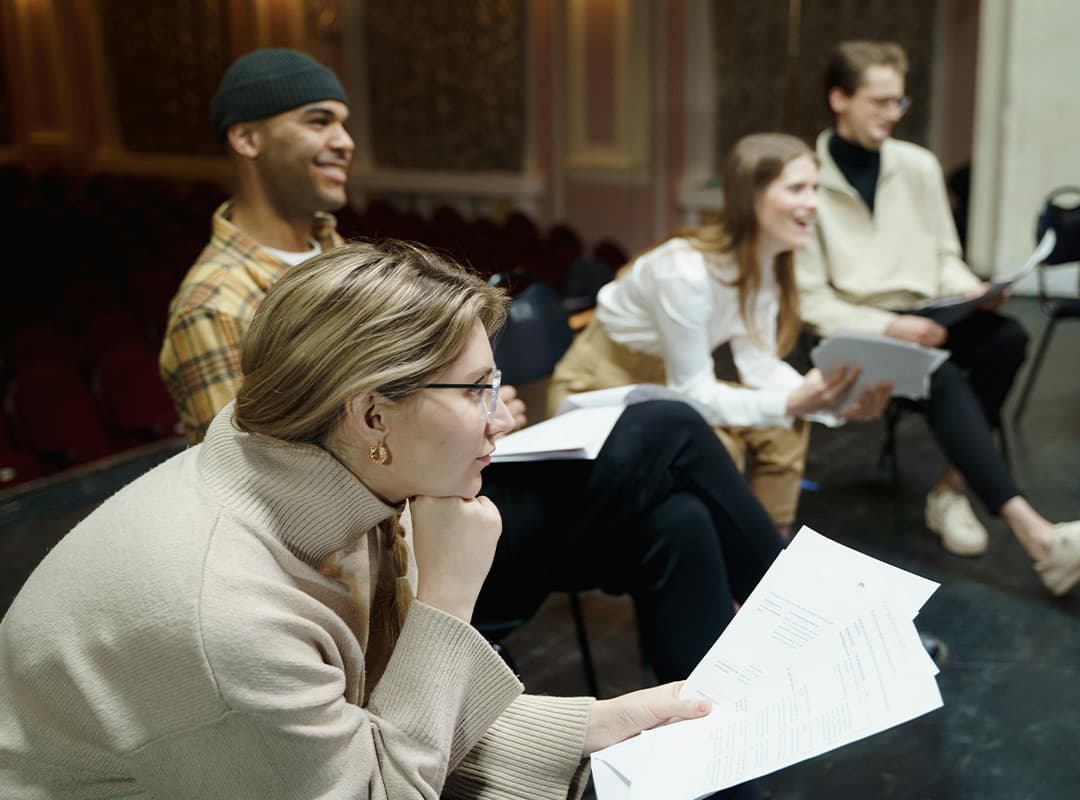Acting art of modern theater
The acting art of the modern theater is characterized by the deepening of the intellectual and philosophical principles, assimilation of the techniques of the political theater, etc. These trends are closely related to the processes taking place in the art of directing and drama, their approach to life with its real conflicts and the multifacetedness of human characters. Further psychologization of characters’ images, motivation of their actions and lifestyle in dynamics are characteristic of acting. The art of acting has sensitively responded to the expansion of genre diversity of works, their stylistics. In the modern theater, different styles coexist on the same stage. They require polyphonicity, flexibility in the manner of acting, based on the basic principle — the actor’s internal justification of the stage image.
Acting art in cinema
Acting in cinema originates from the actor’s performance in the theater. But, unlike the theater, where thanks to direct and long-term communication with the audience, the actor has the opportunity to improve his role, the screen image is embodied once and for all. This determines the special importance of acting in cinema. It is also specific to acting in the cinema that the actor works both in an ensemble and alone with a film camera, but in both cases in accordance with general cinematographic means (rhythm, dialogue, plastic placement in space, in the frame, etc.). The actor’s work in the cinema is complicated by the fact that the shooting takes place frame by frame, without any sequence in time, without a long exposure of the image. In order to preserve the integrity of the image, the actor requires a developed creative imagination, high skill, and naturalness. The need for these important qualities is due to the fact that the screen brings the actor as close as possible to the viewer, who notices and reacts to the subtlest psychological nuances of the game.
The problem of the skill of a film actor arose with the birth of cinema in the cinema. 19th century At each new stage, the character, content, and specifics of the actor’s performance changed. In the period of silent cinema, the lack of sound as a means of conveying the inner state of the film’s hero, the photographic accuracy of the image limited the actor’s possibilities, requiring the actors to search for special forms of image creation.
The main means of acting in silent cinema were expressive gestures, enhanced facial expressions, pantomime, which depicted the emotions of the film’s characters. Spectacular appearance, the ability to wear elegant clothes, and to take beautiful poses were valued above all. There were certain stamps of showing feelings on the screen, which were transferred from film to film, which was also caused by the lack of meaningful scripts.
